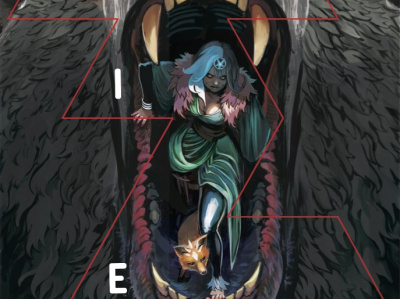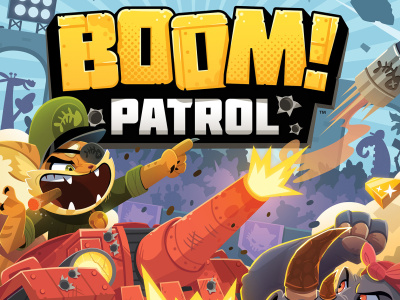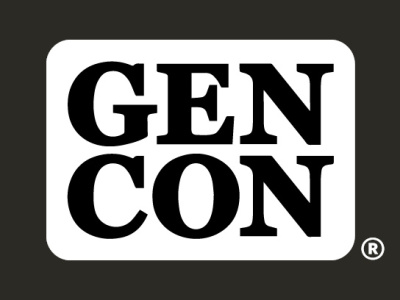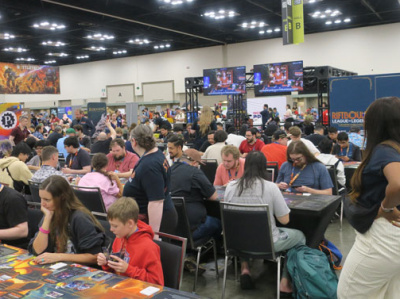 Rolling for Initiative is a weekly column by Scott Thorne, PhD, owner of Castle Perilous Games & Books in Carbondale, Illinois and instructor in marketing at Southeast Missouri State University. This week, Thorne explains why he doesn't bite on Kickstarters for retailers.
Rolling for Initiative is a weekly column by Scott Thorne, PhD, owner of Castle Perilous Games & Books in Carbondale, Illinois and instructor in marketing at Southeast Missouri State University. This week, Thorne explains why he doesn't bite on Kickstarters for retailers.First I want to make certain you understand this comes from a retailer's point of view, not a consumer's. Kickstarter works fairly well as a business to consumer channel, not so much as a business to business channel.
While not as hot as it was about a year ago, Kickstarter is still used by a lot of independent companies in the gaming industry, primarily independent and small press publishers, to publish new releases. Top tier publishers, such as Paizo Publishing, Wizards of the Coast, Fantasy Flight Games, Konami, Bushiroad, etc., don't use Kickstarter or other crowdfunding sites to finance new releases as their current cash flow is strong enough to not need to do so. A number of these projects offer retailer levels designed to allow/entice retailers to participate in the Kickstarter, generally by offering multiple copies of the game at a discount from the planned MSRP, along with any stretch level goals. Last year, Reaper Miniatures ran an incredibly successful Kickstarter with Vampire levels for consumers and Undertaker levels for stores. We, and a lot of other stores, bought into that project, but for us, it was the exception, rather than the rule. Here's why:
1) Crowded marketplace. When I checked earlier today, there are 386 game projects listed on Kickstarter alone. While we have a strong customer base here, there is no way we, or most stores for that matter, have the market to absorb that quantity of new releases, much of which will fund in the next 30 days but not arrive for six months to a year after the backing period ends. This leads to #2.
2) Cash flow. Just like publishers, retailers struggle with cash flow as well. In the publisher's case, however, they get the money up front and they spend it to produce the product. In the retailer's case, if we fund a product, we front the money now, tying it up for several months until the product ships (removing cash from our accounts for six months or better), until we, and everyone else, receive it, leading to #3.
3) Lateness. There is a better than average chance that the publisher will not meet their projected shipping date. An analysis by Ethan Mollick of the Wharton School of Business of over 48,000 Kickstarter-funded projects found that over 75% of them missed their release dates. To cite one example, Steve Jackson Games, which has a great track record of meeting release dates for their Munchkin game and other non-Kickstarter releases, used Kickstarter to fund a designer's edition of Ogre (see "'Ogre' Tops $923,000"). Funding for this ended in May of 2012, with a projected release date of November 2012. It is now September 2013 and the 5500+ backers still have not received Ogre. Lateness may work for consumers who have a passion for the project and will wait. Stores don't have that level of flexibility given the number of products we stock. In a way, this leads to #4.
4) Market saturation. Aldo Ghiozzi of Impressions Game Distribution Services, who has worked with small press game publishers for a number of years, is one of the most knowledgeable people I know regarding the field of independent gaming distribution. According to Ghiozzi, the average RPG release, either via Kickstarter or through distribution, will sell between 150-250 copies (A year ago or so, Kickstarter had a halo effect whereby RPGs published through it might sell up to double the amount they would if sold straight into distribution. This effect appears to have subsided though) with maybe another hundred sold direct through the company's website or at conventions. A boardgame from an independent publisher will sell about 600 to 700 copies, 1000 or more copies only if a runaway success pulling in over $300,000. Ergo, if a company's RPG Kickstarter pulls 300 backers or a boardgame does 600, that pretty much saturates the expected market for that particular product. Only in those few rare cases (Cards against Humanity, FATE, 13th Age), could a store expect to sell more than the publisher already has.
5) Discount. In order to survive, retailers have to sell products for more than we pay for them. In order to justify buying a Kickstarter project for the shelf, we need to buy it at a deeper discount than offered to purchasers of a single copy. Most Kickstarter creators, understandably, cannot or will not do this, both to avoid annoying those backers paying full price and because to do so would cause them to lose money on the project, neither outcome desirable.
As a direct to consumer channel, Kickstarter (and Indiegogo) works pretty well and I will keep looking and backing products, as a consumer. As a retailer, not so much.
The opinions expressed in this column are solely those of the writer, and do not necessarily reflect the views of the editorial staff of ICv2.com.







